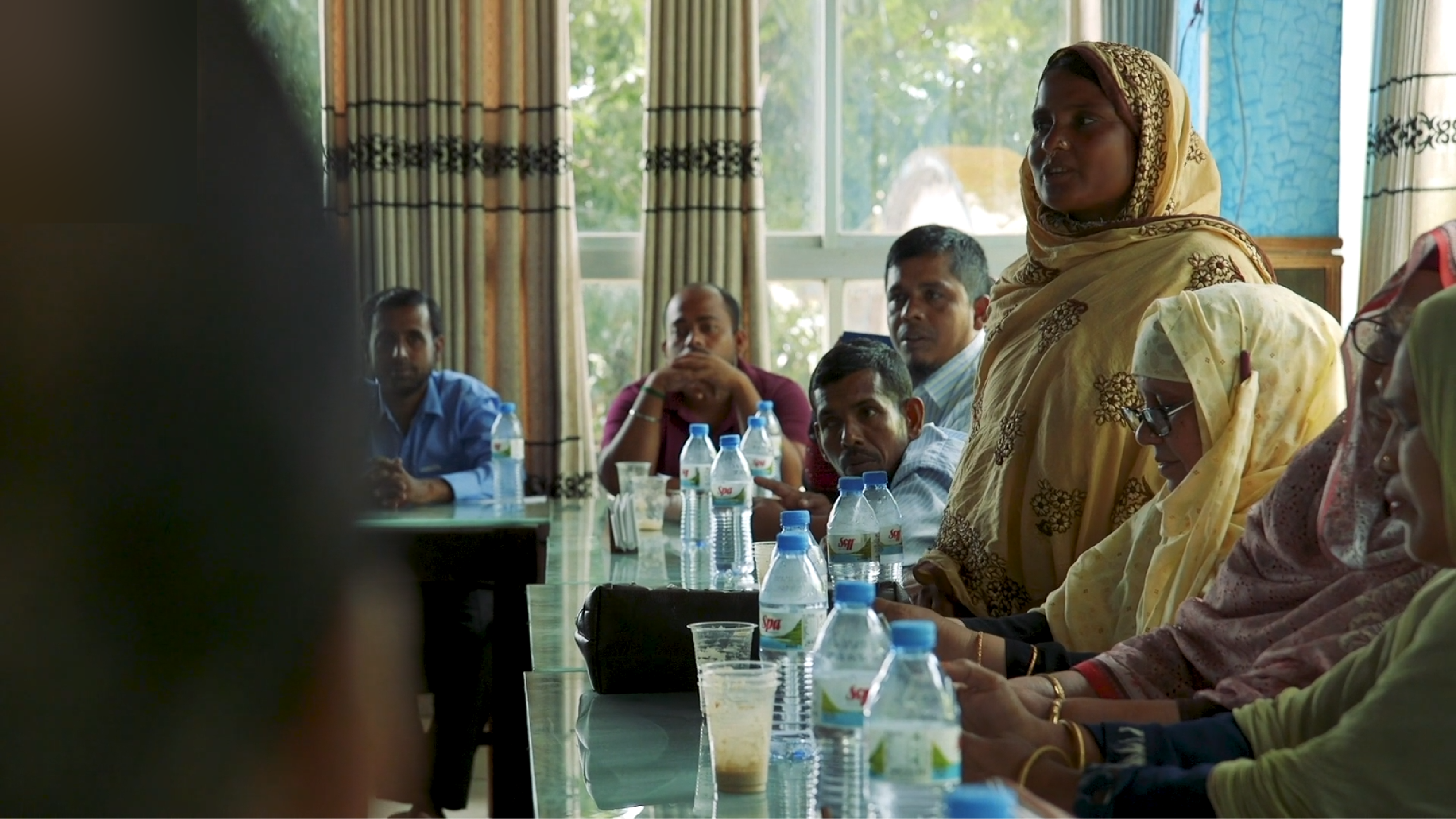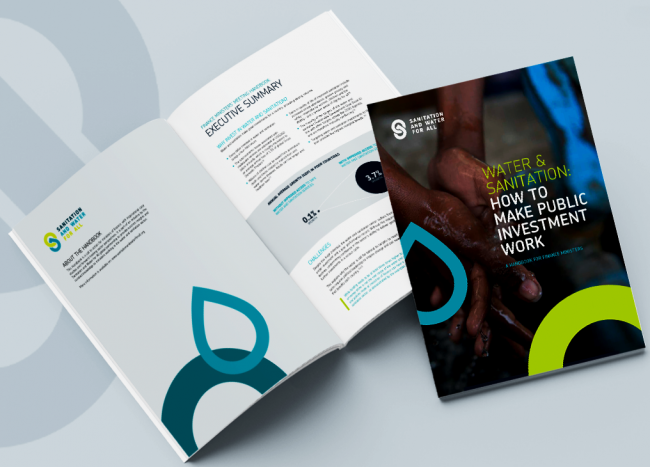
Highlighting financial and technical collaborative successes.
Published on: 11/09/2020
Photo caption: Citizens participating in district budget allocations for the sector, Bhola, Bangladesh |©Eyeopenerworks
In this year’s virtual World Water Week, IRC co-organised a session with GIZ (the German development agency), SWA (Sanitation and Water for All), AFD (the French development agency) and the World Bank. The session was set up to discuss “Whodunnit?” – or more specifically, to understand and learn from countries that have a smooth financial and technical cooperation between treasury (Ministry of Finance) and water and sanitation ministries. But also, how do they manage the cooperation between the large range of multilateral and bilateral agencies operating in those same countries. (See the session video below).
However, these discussions are still largely happening within the water and sanitation sector. While many of us thought that the COVID response would raise the profile of (and investments in) the water and sanitation sector, it hasn’t materialised. A recent Devex article showed the COVID response for the sector has been minimal, leaving many service providers who were already struggling in an even more difficult situation. Based on their database, Devex analysed funding commitments for COVID-19 up to 6 September 2020. US$ 3.968 billion is for WASH, which amounts to only 0.02% of total commitments (US$ 20.4 trillion).

Photo: Sanitation and Water for All (SWA)
How might we turn things around in a world where water and sanitation are woefully under-resourced? SWA has launched the timely Handbook for Finance Ministers – how to make public investment work, where the authors highlight 20 successful country cases on how this match - the financial wizardry between technical and financial assistance - can actually be done.
I think this handbook might lead to relevant impact because it was specifically designed for finance ministers. It is very practical and clearly demonstrates that a lot of additional finance can be mobilised by using existing public funding more efficiently. This can be done by incentivising sector performance, improving subsidy targeting and promoting better sector planning and management. Public financial management is often outside the scope of water sector influence and falls within the realm of treasury colleagues.
There is another set of measures that has been used extensively in many countries to mobilise additional finance. They raise large amounts of funds but are not the most popular, politically speaking. They include setting up adequate cost recovery policies, tariffs reforms, introducing earmarked taxes and establishing an array of options for cross-subsidisation.
There are two more approaches for ministers of finance described in the handbook: increase repayable domestic finance (i.e. by creating mechanisms that reduce perceived risks in the sector and many combinations for pooled funds) and encourage innovation and least-explored new approaches such as access to climate funds and also social impact bonds. It has been more difficult to find successful cases in these areas and, at least until now, they mobilise less resources than designing better subsidies or introducing specific taxes for the sector. It is also clear from the cases that the ability of low- and middle-income countries to mobilise additional, repayable financing and explore financial innovations is highly dependent on the ability of the sector to demonstrate that it is making good use of existing funding.
We know what works and whodunnit, so why don’t we see more of these successful cases being replicated? Why is there so much failure with financial instruments? We can go back to the required foundational issues for finance to work in the sector. There are big gaps. There is, in reality, much less cooperation in the sector than we think. This is not easy. In a recent internal survey of GIZ in 80+ countries, only in 1 in 5 there was perceived cooperation between the two German development agencies: GIZ (technical support) and KfW (financial support).
The panel discussion of the World Water Week session and the cases in the SWA Handbook point to three “ingredients” to make cooperation between technical and financial agencies work:
Most of us are neither ministers, bankers, or financial wizards, but we can roll up our sleeves and bring the right people together, learning and sharing what has been done elsewhere.
Acknowledgements: this blog was reviewed by John Butterworth and copy-edited by Tettje van Daalen
Watch the video of the session "Whodunnit? Tracking down and learning from smooth financial & technical cooperation cases", below.
At IRC we have strong opinions and we value honest and frank discussion, so you won't be surprised to hear that not all the opinions on this site represent our official policy.